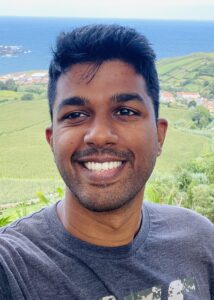 Arvind Mohan, Ph.D.
Arvind Mohan, Ph.D.
Staff Scientist, Computational Physics and Methods Group
Los Alamos National Laboratory
Thursday, Oct. 17th at 3:30pm
MEK 3350
ABSTRACT: Interest in scientific Machine Learning (SciML) has grown exponentially recently, with applications in several disciplines. In this talk, I will discuss the efforts of my research group to develop SciML algorithms dedicated to critical systems in physical sciences. Such critical systems have an immediate, direct, and consequential impact on our communities, such as environmental systems and physical infrastructure. This work narrows down to a large class of spatiotemporal critical systems governed by partial differential equations (PDEs) in high-dimensional systems, widespread in earth sciences and engineering applications. A significant challenge in these systems is the prohibitive computational time and effort required for numerical simulations, especially on the timescales needed to take action. While neural networks-based reduced order models (ROM) for spatiotemporal data have shown considerable promise, they are not immune to severe computational bottlenecks in learning extremely high-dimensional datasets. These application-agnostic networks may also lack physical constraints, uncertainty quantification, and interpretability that are desired in scientific ROMs for decision-making. Another challenge is the inverse modeling of high-dimensional data with sparse sensing, which is common in many environmental and engineering applications. I will discuss our algorithmic innovations to address these challenges in forward and inverse modeling in this talk, with numerous case studies. The talk will conclude with my perspective on the promise and limitations of AI in this class of problems and the path ahead for multidisciplinary collaborations..
BIO: Arvind Mohan is a staff scientist in the Computational Physics and Methods Group (CCS-2) at Los Alamos National Laboratory and an adjunct assistant professor at Utah’s Mechanical Engineering Department. He obtained his PhD in 2017 in Aeronautical and Astronautical Engineering from The Ohio State University, where he specialized in data-driven modeling and numerical simulations of aerodynamics of flight vehicles. His expertise is in reduced order modeling (ROM) and physics-constrained machine learning algorithms for PDEs, with applications in high-dimensional datasets occurring in many areas of engineering and earth sciences. He has also made several machine learning-based research contributions to aerospace design, nuclear physics, biomedical engineering, and fluid dynamics. His primary research interest is ML algorithm development for modeling critical systems for rapid analysis and decision-making.